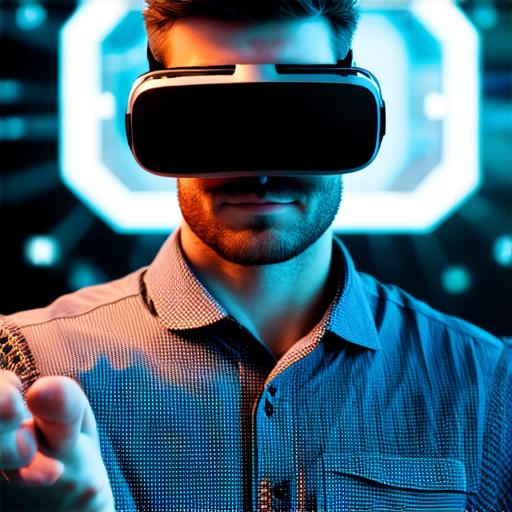Virtual reality (VR) technology is rapidly evolving and gaining popularity in various industries, including gaming, education, healthcare, and more. In recent years, Apple has been working on its own VR technology and has released several products that showcase its capabilities.
Apple’s VR Technology: A Brief Overview
Apple has been working on its VR technology for several years, with the first signs of its involvement emerging in 2015 when it acquired VR startup Realities and began developing augmented reality (AR) technology. Since then, the company has continued to invest in this area and has released several products that showcase its capabilities.
One of the most notable examples of Apple’s VR technology is the iPad Pro, which was launched in 2018 with support for ARKit. This feature allows developers to create immersive AR experiences that can be viewed using an iPad Pro’s camera. Additionally, Apple has also been rumored to be working on a standalone VR headset, although no official details have been released yet.
Key Features of Apple’s VR Technology
Apple’s VR technology is built upon several key features that set it apart from other solutions on the market. These include:
- High-quality display
- Integration with other Apple devices
- Easy setup and use
- Advanced tracking technology
Benefits of Apple’s VR Technology
Apple’s VR technology offers several benefits that make it an attractive option for developers. These include:
- High-quality experiences
- Seamless integration with other Apple devices
- Easy setup and use
- Advanced analytics and tracking
Potential Applications of Apple’s VR Technology
Apple’s VR technology has the potential to be applied in a wide range of industries, including:
- Gaming
- Education
- Healthcare
- Training and simulation

Case Studies of Apple’s VR Technology in Action
There are several case studies that demonstrate the potential of Apple’s VR technology in action. One such example is the work being done by the University of California, San Francisco (UCSF) to use virtual reality therapy for patients with PTSD. The UCSF team developed a virtual reality program called “Exposure Therapy” that simulates real-world scenarios where patients may have experienced trauma. By using Apple’s VR technology, the team was able to create a highly immersive and realistic experience that helped patients confront their fears in a safe and controlled environment.
Another example is the work being done by NASA to use virtual reality technology for space exploration training. NASA has developed several virtual reality simulations that allow astronauts to practice various tasks in a simulated environment. By using Apple’s VR technology, NASA was able to create highly realistic simulations that accurately replicate the conditions of space travel, helping astronauts prepare for real missions.
The Future of Apple’s VR Technology
While Apple has not yet released a standalone VR headset, it is widely rumored to be working on one. If and when this device is released, it is likely that we will see even more advanced VR technology from Apple, with further improvements in display quality, tracking accuracy, and integration with other devices.
In addition, as the VR industry continues to grow, we are likely to see more innovative applications of VR technology across a wide range of industries. As developers, it is important to stay up-to-date with the latest developments in this exciting field and explore how Apple’s VR technology can be leveraged to create immersive and engaging experiences for users.
Conclusion
Apple’s VR technology is an exciting development that has the potential to revolutionize the way we interact with virtual reality. With its high-quality displays, advanced tracking technology, seamless integration with other devices, and easy setup and use, Apple’s VR technology offers a compelling option for developers looking to create immersive experiences. As the industry continues to evolve, it is likely that we will see even more innovative applications of VR technology across a wide range of industries.
